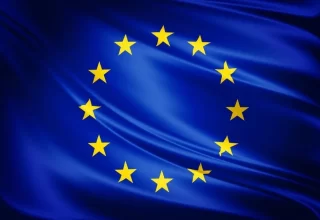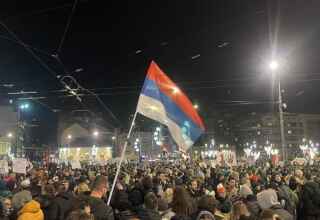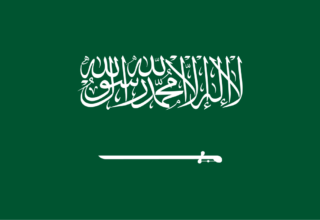
The United Nations (UN) and African Union (AU) are quickly reaching a crossroads on how to collectively support multilateral peace operations on this immense continent plagued on all sides by bloody conflicts of unprecedented violence. Rising levels of political violence across Africa are joined fragile peace agreements, a precarious macroeconomic environment, and a growing reliance on counter-terrorism efforts. Unless rectified, these differences could jeopardise the mainstay of the UN-AU partnership since 2002 and undo years of steady progress (Forti & Singh, 2021). Despite notable growth in many areas of their partnership, divides on how they should respond to the continent’s security have deepened. Growing divides on how to respond to the shifting landscape of multilateral peace operations bring this crossroads into sharp relief. If unaddressed, especially by permanent UN Security Council (UNSC) members and powerful member states at the AU, the UN-AU partnership is in jeopardy of backsliding after years of steady progress. In recent months, the difficulties in mustering unified responses to the situations in Cameroon, Chad, Ethiopia and Mozambique stand out. Neither the UN nor AU have mandated operational responses that can match their relatively limited pronouncements on these conflicts. Cooperation on peace operations is an unquestioned mainstay of the UN-AU partnership. But the foundations of how the partners cooperate on peace operations are coming under increasing strain.
This is due to a number of issues which include: a persistently uncertain budgetary environment, a growing reliance on ad-hoc counterterrorism operations, and the challenges posed by fragile political settlements and peace agreements (Forti & Singh, 2021²). The net effect of these shortcomings is that the UN and AU are seen as increasingly ineffectual actors in rolling out comprehensive responses to emergent crises. This lack of unity and common strategic direction, particularly at the level of the AU PSC and UNSC, has further spilled over into the engagements of Council member states in countries in which multilateral peace operations are active.
To make matters worse, Beijing is exerting increasing control over African capitals to force them to align themselves with its diplomatic interests. Alie Kabba, ambassador to the UN, coordinator of the “Committee of Ten” (C10) – a group of ten African countries that are supposed to defend the position of the African Union (AU) on a possible reform of the Security Council, asked a few weeks earlier Member States to help him convince the permanent members of the Council who are reluctant to reform the Security Council. China and Russia are openly opposed to any change, whether it be adding new permanent members or changing the veto power. But in the final stretch of this discussion, the Sierra Leonean ambassador had died down and was only putting forward dated African positions. “Everyone understood that he had been pressured by his capital, on the orders of Beijing,” said a European diplomat (Nooten, 2021). The spectre of China, which has multiple interests in establishing itself and investing in Africa, is therefore posing a growing threat to this cooperation. This article will attempt to describe the common relationship between the African Union and the United Nations, and what links China has with the African continent that could motivate the pressure the country exerts on the AU.
Inter-organizational relations and mutual legitimation
In the 1990s and early 2000s, ‘subcontracting’ of peace operations to regional actors by the Security Council (UNSC) was the dominant pattern. Now, there are more and more instances where the UN and regional organizations deploy missions in sequence, in parallel, or engage in some degree of joint planning, shared resourcing and integrated implementation (Balas, 2011). The actors participating in these partnerships have presented them as more viable and appropriate responses to current security challenges (Yamashita, 2012). In the Central African Republic, Somalia, Sudan and elsewhere, the UN has collaborated with the African Union (AU) and several sub-regional organizations to address security challenges jointly.
The poor record of UN peacekeeping after the Cold War was a main driver behind the intensification of peacekeeping ties between the UN and regional organizations especially on the African continent. The UN’s slow response to urgent security challenges prompted regional actors to develop institutional capacities and a normative disposition to take matters into their own hands (Akuffo, 2010). Critics of this model were quick to point out that these local operations had many limitations that the UN had to overcome. UN gradually turned to a more proactive strategy of sharing responsibilities by taking over missions led by regional organizations or co-deploying alongside them (Bellamy & Williams, 2005). Regional organizations and the UN have therefore gradually institutionalized their partnership. The AU case include a Ten-Year Capacity Building Programme, a UN-AU Joint Task-Force on Peace and Security, regular consultations between the UNSC and the AU’s Peace and Security Council (PSC), and the establishment of a UN Office to the AU (Spandler, 2020). Africa has developed significant peace operations capacity over the past decade. In addition to deploying eight AU operations, Africa now contributes 50% of all UN peacekeepers. The African Union act as first responders and stabilize an outbreak of violent conflict, then UN takes over with a peacekeeping operation to consolidate the peace.
The current cooperation, at least when it comes to peace operations, is not based on subsidiarity, but rather on a functional division of labor where the AU takes responsibility for early stabilization—what the UN views as peace enforcement—while the UN takes responsibility for peace consolidation, via UN peacekeeping operations, once sufficient stability has been established (Coning, 2017). One of the AU’s serious challenges is the capacity to support its own operations. It will take several years for the AU to develop and refine its missions support capacity, and in the mean time, it will rely on the UN and other partners to support its operations. To date, the AU has been heavily dependent on its partners, especially the EU through its African Peace Facility and the UN in the case of Somalia, to finance its peace operations. In this context, a strategic partnership has evolved between the AU and the UN, where the AU acts as the first responder to outbreaks of violent conflict on the continent. From a UN perspective, the AU is a partner that is able to undertake some of the peace enforcement and counterterrorism operations the UN is not able to do itself. From an AU perspective, the UN is a burden-sharing partner that can support the operations it undertakes on behalf of the UN Security Council, and the UN is also an exit strategy for the AU, with UN peacekeeping operations taking over from AU stabilization operations, once the AU has been able to sufficiently stabilize a given situation (ibid).
Africa’s peace and security architecture rests upon effective relationships between the AU and the continent’s Regional Economic Communities and Regional Mechanisms, based on the principle of subsidiary. While the UN-AU partnership is one political center of gravity, there is in reality a mosaic of multilateral responses shaped by regional and sub-regional actors and interests, which are not always coherent or complimentary. Host countries, neighbors, and powerful allies can now forum shop between different operations, oftentimes favoring short-term security priorities at the expense of holistic commitments to improving governance, human rights conditions, and socio-economic equality. There is also a risk of further blurring the distinctions between multilateral peace operations and counterterrorism initiatives, especially in the eyes of the people they are meant to serve. These challenges accentuate the headwinds that the UN-AU partnership on peace operations will likely face over the coming years. The past four years have been a period of significant growth for the partnership, driven in large part by the efforts of AU Commission Chairperson Moussa Faki Mahamat and UN Secretary-General Antonio Guterres. As the continent’s peace and security environment grows in complexity, the UN-AU partnership cannot afford to regress. Strengthened cooperation on peace operations is key to not only sustaining the partnership, but also solidifying a new era of multilateralism defined by shared political strategies, values, and principles (Forti & Singh, 2021²).
China-Africa relations and the issue of foreign investments
Currently, China is Africa’s single largest trading partner, accounting for approximately 15percentofthecontinent’strade.Itisalsooneofthemostimportant providers of aid and loans to African countries, with estimates indicating that China’s Export Import Bank provides more loans to Africa than the World Bank (Bräutigam 2010). China’s share of exports from Africa increased five-fold from 3 percent in 1998 to 15 percent in 2008 (Songwe and Moyo 2012).China’s foreign direct investment (FDA) stock in Africa rose to almost US$24 billion in 2013, reflecting an annual growth rate of 50 percent between 2004 and 2013 (Copley, Maret Rakontondrazaka, and Sy 2014). China-Africa relations have grown rapidly in scope and scale; bilateral cooperation has become more diversified; and the development of China-Africa relations is both well-planned and well-managed.
The cooperation between Africa and China has been much debated in the recent years and has attracted the attention of researchers, development partners, civil society, and policy makers. Critics take issue with China’s indiscriminate investments in good and bad governments alike, with its particular affinity for corrupt and dictatorial governments, and claim it has undermined peace and security in the region, such as seen in northern and southern Sudan and the Democratic Republic of Congo (Iyasu, 2013). China is also blamed for pruning away many of the benefits of its large-scale infrastructure projects in Africa by hiring Chinese contractors and even importing Chinese workers (Dollar 2016). African countries end up with low-quality infrastructure, marginalized local contractors, and little or no extra employment. In cases where Chinese firms do hire locally, they are sometimes reproached for horrible working conditions (Vaes and Huyse 2013). Similarly, the massive importation of cheap consumer products from China and the arrival of so many Chinese entrepreneurs and businesses are provoking strong reactions. Additionally, the role of China on global efforts to increase aid effectiveness has also been criticized, as China usually operates outside the OECD policy framework for development cooperation.
China’s financing and FDI to Africa has dramatically expanded in recent years. The growth has advanced the “political and economic interests of China while also providing Africa with much needed financial resources and technology” (Christensen, 2010). According to the International Trade Centre (2013), by 2010, Africa was the fourth-largest regional recipient of Chinese outward FDIstockatUS$13billion, or 4.1 percent of the total. As might be expected, China’s FDI in Africa is varied, with investments covering mining, financing, manufacturing, construction, tourism, agriculture, forestry, animal husbandry, and fisheries. China also crucially relies on Africa for its critical “imports of cobalt (more than 80 percent), primarily from Gabon, South Africa and Ghana; chromium (South Africa, Madagascar, and Sudan); timber(mainly from Gabon, Republic of Congo, and Cameroon) (Christensen, 2010). Hence, it is no surprise that mining and manufacturing makes up more than 50 percent of the FDI received by African countries.
In other words, China is ravenously seeking raw materials to support and sustain its extraordinary growth rates; it also needs allies to bolster international recognition as a world power. Investment has been on the rise, driven primarily by extractive industries, and natural resource exports, particularly of oil by African countries, have helped China fill its energy gap and support its macroeconomic growth (Diawara & Hanson, 2019). China’s evolution into a manufacturing giant has generated highly heterogeneous impacts across sectors, firms and localities in both developed and developing countries. More recently, the “China Shock” has started to unfold beyond the “traditional” trade channels to involve out-ward FDI, for example through the “Belt and Road Initiative” (Huang, 2016). The ongoing tensions between the USA and China have further polarised views on Chinese FDI in Africa, considering the latter through a neocolonialist lens.
China thus sees Africa as an essential partner for the import of its rare raw materials in order to maintain its intensive productivist lifestyle. As we have shown previously, China has an unfortunate tendency to encourage dictatorial regimes and those that stand on the edge of human rights. That is why it does not want peacekeeping or peacemaking missions to upset this balance. Indeed, dictatorial regimes that flout international rules are much more likely to be controlled and lured by foreign investment, which makes them much more malleable in China’s eyes. However, any pressure that may be brought to bear on African diplomats should in no way interfere with negotiations between the UA and the UN. Their institutionalized partnership has proven to be effective and must continue to address the many security challenges facing the continent. Cooperation between the UA and the UN must be strengthened through a deeper dialogue without privileging bilateral relations as can be observed with China. National interests should not take precedence over the general international interest. Through its own economic interests, China could well cause a deterioration of the situation in African countries and thus encourage the loss of security of their populations.
Bibliography
Akuffo, E. A. 2010. “Cooperating for Peace and Security or Competing for Legitimacy in Africa? The Case of the African Union in Darfur.” African Security Review 19 (4): 74–89.
Balas, A. 2011. “It Takes Two (or More) to Keep the Peace: Multiple Simultaneous Peace Operations.” Journal of International Peacekeeping 15 (3–4): 384–421.
Bellamy, A. J. & Williams, P. D. 2005. “Who’s Keeping the Peace? Regionalization and Contemporary Peace Operations.” International Security 29 (4): 157–195.
Bräutigam, D. 2009. The Dragon’s Gift: The Real Story of China in Africa. New York: Oxford University Press. 2010. “China, Africa, and the International Aid Architecture.” Working Paper no. 107. Tunis: African Development Bank, April 2010.
Christensen, B. V. 2010. “China in Africa: A Macroeconomic Perspective.” Working Paper 230. Washington, D.C.: Center for Global Development.
Coning, C. 2017. Peace enforcement in Africa: Doctrinal distinctions between the African Union and United Nations. Contemporary Security Policy, volume 38 (1).
Copley, Amy, Fenohasina, Rakontondrazaka, M. and Sy, A. “The U.S.-Africa Leaders’ Summit: A Focus on Foreign Direct Investment.” Brookings (blog), July 11, 2014.
Diawara, B. & Hanson, K. T. 2019. What Does the Evidence Say about Contemporary China Africa Relations? Innovating South-South Cooperation.
Dollar, D. 2016. China’s Engagement with Africa –From Natural Resources to Human Resources. John L. Thornton China Center Monograph Series, no. 7. Washington D.C.: Brookings Institute, July.
Forti, D. & Singh, P. 2021 July 1. Can the UN and AU Navigate the Shifting Landscape of Multilateral Peace Operations?
Forti, D. & Singh, P. 2021 July 1. Once a mainstay of good relations, these differences will test the limits of cooperation between the two multilateral bodies. Institute for Security Studies.
Huang, Y.: 2016, Understanding China’s belt & road initiative: motivation, framework and assessment, China Economic Review 40, 314–321.
Iyasu, A. 2013. “China’s Non-Interference Policy and Growing African Concerns.” African Arguments, July 18.
Nooten, C. 2021 July 3. Les Etats africains sous pression de la Chine à l’ONU. Le Monde, International. Available at : https://www.lemonde.fr/afrique/article/2021/07/02/les-etats-africains-sous-pression-de-la-chine-a-l-onu_6086771_3212.html
Songwe V, & Moyo, N. 2012. “China-Africa Relations: Defining New Terms of Engagement,” in Foresight Africa: Top Priorities for the Continent in 2012. Washington, D.C.: The Brookings Institution: Africa Growth Initiative.
Spandler, K. 2020. UNAMID and the Legitimation of Global-Regional Peacekeeping Cooperation: Partnership and Friction in UN-AU Relations. Journal of Intervention and Statebuilding. Volume 14, 2020 – Issue 2: Security Governance/IOs in Africa.
Vaes, S. and Huyse, H. 2013. “New Voices on South-South Cooperation between Emerging Powers and Africa: African Civil Society Perspectives.” KU Leuven: HIVA-Research Institute for Work and Society.
Yamashita, H. 2012. “Peacekeeping Cooperation Between the United Nations and Regional Organisations.” Review of International Studies 38 (1): 165–186.
By Mahmoud Refaat: The European Institute for International Law and International Relations.















